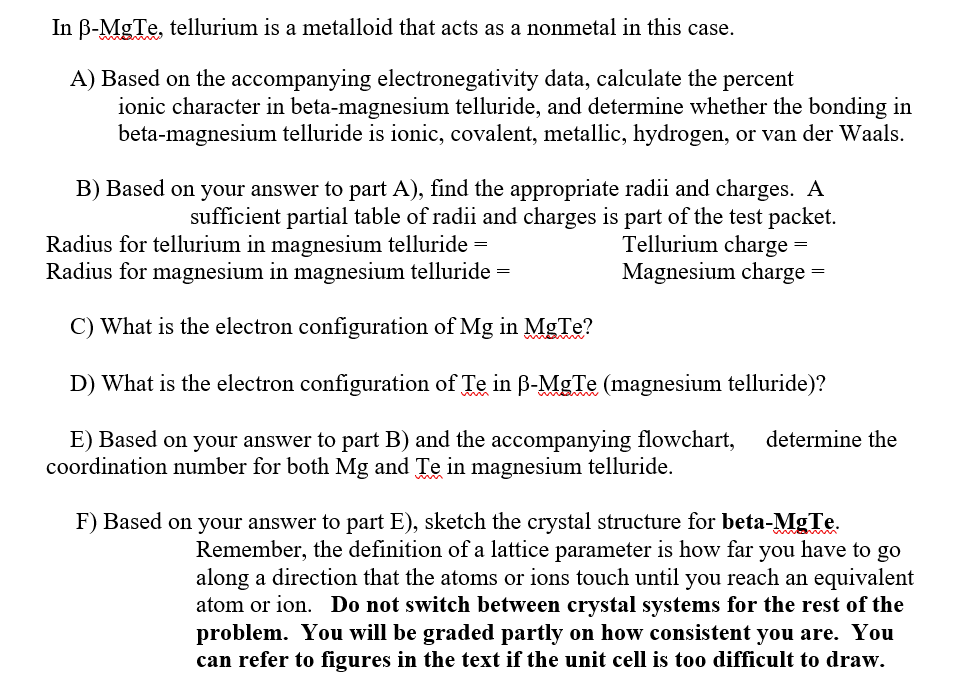In B-MgTe, tellurium is a metalloid that acts as a nonmetal in this case. A) Based on the accompanying electronegativity data, calculate the percent ionic character in beta-magnesium telluride, and determine whether the bonding in beta-magnesium telluride is ionic, covalent, metallic, hydrogen, or van der Waals. B) Based on your answer to part A), find the appropriate radii and charges. A sufficient partial table of radii and charges is part of the test packet. Tellurium charge = Magnesium charge = Radius for tellurium in magnesium telluride = Radius for magnesium in magnesium telluride = %3D C) What is the electron configuration of Mg in MgTe? D) What is the electron configuration of Te in ß-MgTe (magnesium telluride)? E) Based on your answer to part B) and the accompanying flowchart, coordination number for both Mg and Te in magnesium telluride. determine the F) Based on your answer to part E), sketch the crystal structure for beta-MgTe. Remember, the definition of a lattice parameter is how far you have to go along a direction that the atoms or ions touch until you reach an equivalent atom or ion. Do not switch between crystal systems for the rest of the problem. You will be graded partly on how consistent you are. You can refer to figures in the text if the unit cell is too difficult to draw.
Formal Charges
Formal charges have an important role in organic chemistry since this concept helps us to know whether an atom in a molecule is neutral/bears a positive or negative charge. Even if some molecules are neutral, the atoms within that molecule need not be neutral atoms.
Polarity Of Water
In simple chemical terms, polarity refers to the separation of charges in a chemical species leading into formation of two polar ends which are positively charged end and negatively charged end. Polarity in any molecule occurs due to the differences in the electronegativities of the bonded atoms. Water, as we all know has two hydrogen atoms bonded to an oxygen atom. As oxygen is more electronegative than hydrogen thus, there exists polarity in the bonds which is why water is known as a polar solvent.
Valence Bond Theory Vbt
Valence bond theory (VBT) in simple terms explains how individual atomic orbitals with an unpaired electron each, come close to each other and overlap to form a molecular orbital giving a covalent bond. It gives a quantum mechanical approach to the formation of covalent bonds with the help of wavefunctions using attractive and repulsive energies when two atoms are brought from infinity to their internuclear distance.

Trending now
This is a popular solution!
Step by step
Solved in 3 steps









